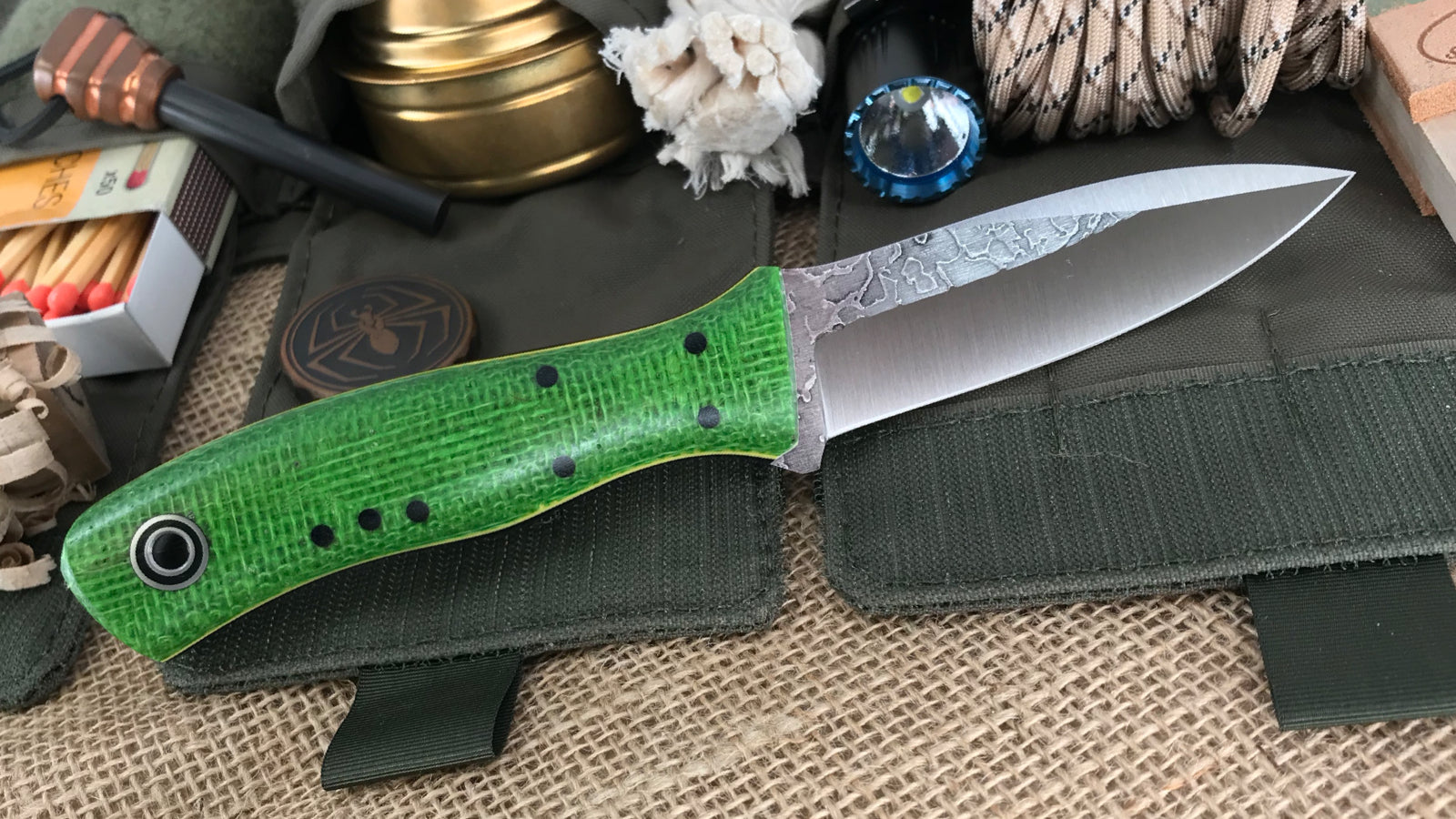X15Tn, French steel patented by Aubert & Duval, initially created for medical market and jet ball bearings. According to the company data sheet It meets EN 1. 4123 requirement (designation X40Cr, Mo, NV16-2) and also UNS42025.
Made use of by Benchmade in their salt water/diving knives.,. Vanax, generated by Uddeholm, is a fairly brand-new, 3rd generation powder metallurgy blade steel in which carbon is greatly replaced by nitrogen. This leads to a steel with extreme rust resistance, exceptional side holding, yet it is relatively quickly resharpened while including a relatively high carbide volume for unpleasant cutting side retention.

Spyderco uses this steel in numerous of their knives. The Hippekniep is a folding penknife made by the Herdsman knife-making firm in Solingen, Germany. The blade is made from non-rustproof carbon steel, blue-plastered by hand and also carefully created from the base to the tip of the blade. The 90 mm (3. making custom knives.
Carbon steel is a preferred selection for rough use blades and also less costly alternatives. Carbon steel made use of to be much tougher, a lot a lot more sturdy, as well as less complicated to develop than stainless steel.
The Definitive Guide to B Merry Studio
Carbon steels lack the chromium material of stainless steel, making them extremely prone to corrosion. Carbon steels have less carbon than normal stainless steels do, yet it is the main alloy component. They are a lot more uniform than stainless than various other high alloy steels, having carbide only in really tiny incorporations in the iron.
The only advantage they currently hold over premium stainless steel alloys is a lot reduced production expenses. 10xx collection The 10xx series is the most prominent option for carbon steel made use of in blades as well as katanas.

1095, a preferred high-carbon steel for blades; it is harder however much more fragile than lower carbon steels such as 1055, 1060, 1070, and 1080. It has a carbon content of 0. 90-1. 03% Many older swiss army knife and cooking area blades were made from 1095. It is still preferred with many bush crafters and also survivalists as a result of its sturdiness and also simplicity of developing.

93%. Typically suggested for beginner blade manufacturers or those without more innovative heat treating devices due to the simplicity of warmth treating it successfully in such problems, yet additionally made use of by lots of specialist blade smiths for numerous kinds of blades as it can make excellent blades.
Getting The B Merry Studio To Work
65-0. 75% Used in machetes. 1060, utilized in swords or Axes. It has a carbon web content of 0. 55-0. 65% 1055, used in swords as well as machetes usually heat-treated to a springtime temper to lower damage. It has a carbon content of 0. 48-0. 55% 1045, used in Axes. It has a carbon content of 0 – custom leather sheaths for knives.
V-2C, Pure carbon steel, with unclean materials totally eliminated. Aogami/Blue-Series a Japanese exotic, premium steel made by Hitachi. The “Blue” describes, not the color of the steel itself, but the color of the paper in which the raw steel comes wrapped. Aogami/Blue-Num -1 A steel with greater tensile strength and also developing capability than blue-2.
Aogami/Blue-Super A steel with higher Toughness, tensile stamina and edge security than all various other steels in its series. Aogami/Super blue The exact same steel as Blue-Super A Shirogami/White-series Shirogami/White -1 Hardest amongst the Hitachi steels, but lacks durability. Shirogami/White -2 Tougher than S/W -1 but as not much Carbon web content, thus slightly much less tough. Kigami/Yellow-Series Steel “Better” steel compared to SK series, but worse than both, Aogami as well as Shirogami.
Various other exclusive steels INFI, a distinct steel made use of in Busse knives. It is a hard steel, that withstands both wear and deterioration reasonably well. Prior to 2002, INFI included 0. 5% Carbon, 0. 74% Nitrogen, regarding 1% Cobalt, and also about 0. 1% Nickel. In 2002, Busse transformed the steel structure by eliminating Nitrogen, yet included 0.
More About B Merry Studio
Various other carbon steel These steels did not exist in a series. ulu knife uses. The group of these steels is unidentified at this time.
High discolor resistance however sub-par side retention. 0. 45-0. 55% carbon, 0. 1-0. 2% vanadium, 14-15% Chromium, 0. 5-0. 8% Molybdenum. In 2017 it made invasions in mid-priced (in between 7Cr17Mov and 440C San Mai) Chinese made knives, generally in bigger, 9-12″ chef’s blades and cleavers toughened up to RC 5660 with improved side retention.
Thyssen-Krupp names their steels utilizing conventional convention, i. e. getting rid of. Under the Hullabaloo system, this steel is defined as X50Cr, Mo, V15, with the X indicating stainless steel, the 50 referring to the carbon material in hundredths of a percent, as well as the 15 referring to the percent of chromium rounded to the closest whole number. ulu knife from alaska.
One more name for this steel is 5Cr15Mo, V, as well as for that reason belongs in the Cr, Mo, V family of steels, with this specific steel having efficiency comparable to AUS-8 but with perhaps slightly much better corrosion resistance. (5Cr14Mo, V is also essentially similar, with partially lower quantities of chromium. In this calling convention, the number to the left of the Cr indicates the carbon web content in tenths of a percent, while the number to the right of the Chromium suggests the percent of chromium rounded to the nearest entire number.) Krupp 4116 (a.manufactured by Aicihi and also has Chromium 0. 80-0. 95% Silicon 0. 35-0. 50% Manganese 0. 25-0. 40% Phosphorus under 0. 040% Sulfur under 0. 030% Chromium 17 – alaskan knife. 00-18. 00% Molybdenum 1. 00-1. 25% Vanadium 0. 08-0. 12% materials. especially developed to meet resistance to rust and wear in stainless has not compared to several carbon steels.
